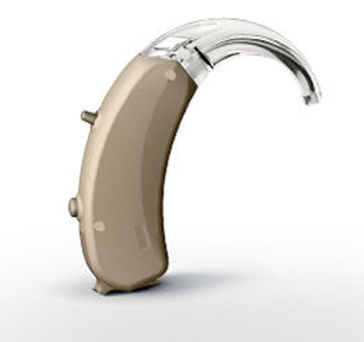
The most familiar hearing aid style, Behind-The-Ear (BTE) aids, are housed in a durable case that rests on the back of the outer ear. These aids are suitable for the widest range of hearing loss, including profound hearing loss.

The most familiar hearing aid style, Behind-The-Ear (BTE) aids, are housed in a durable case that rests on the back of the outer ear. These aids are suitable for the widest range of hearing loss, including profound hearing loss.

CICs are the smallest hearing aid style except for invisible-in-the-canal (IIC) hearing aids. They fit inside the ear canal, with only a small portion of the face visible, making them difficult to notice. A tiny cord helps you insert and remove the device.
